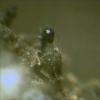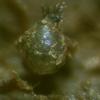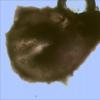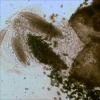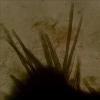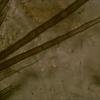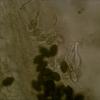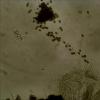
29-12-2025 10:15
Hulda Caroline HolteHello, I found and collected this propoloid ascom

29-12-2025 09:38
Oskari VirtanenHi,could anyone help me identify this, I suspect P

29-12-2025 08:30
Hello.A tiny ascomycete sprouting under Juniperus

28-12-2025 12:08
Margot en Geert VullingsThis possible Karstenia was found on the bark of d

21-12-2025 21:32
Pol DebaenstHello, Garden, Burgweg 19, Veurne, BelgiumOn 10/1

26-12-2025 21:19
Arnold BüschlenPithyella chalaudii Priou. Ist als Bryoparasit in

21-12-2025 09:32
Hello.A tiny ascomycete found embedded in wood in

18-12-2025 21:17
Pol DebaenstThe identification took me to Byssonectria deformi

Found on cow dung.
Perithecium embedded in the dung whereby only the neck is sticking out. Neck is covered with straight hairs short at the top 130-159 um and longer at the base 500-600 um, both with a width of 4.5-5.5 um, thickwalled 0.9-1.2 um, 5-6 septa hairs constricted but not at the septa.
Asci: Only one mature ascus found containing 512 spores 470x160 um with a short stalk. It is difficult to find an ascus still containing spores because most of the time they collaps and counting the spores will be impossible.
Spores: 18.5-21.5x11.5-13 um, pedicel 13-15x4.5-5.5 um, upper cauda and lower cauda present.
The number of spores are counted by pressing the ascus and spreading the spores, the software is adding a dot and a number to each spore this way counting a great amount of spores is possible (foto-12) and then it's just a matter of counting the end numbers of each overvieuw
The cauda seems to consist of two lashes see foto-8 whereby the end of two lashes is visible by the cauda connected to the pedicel.
When pressing the deck glass caudas becomes extremely long foto-11
Also by pressing the ascus it looks as if the spores are connected to each other by a string when forced out of the ascus. (foto-10)
